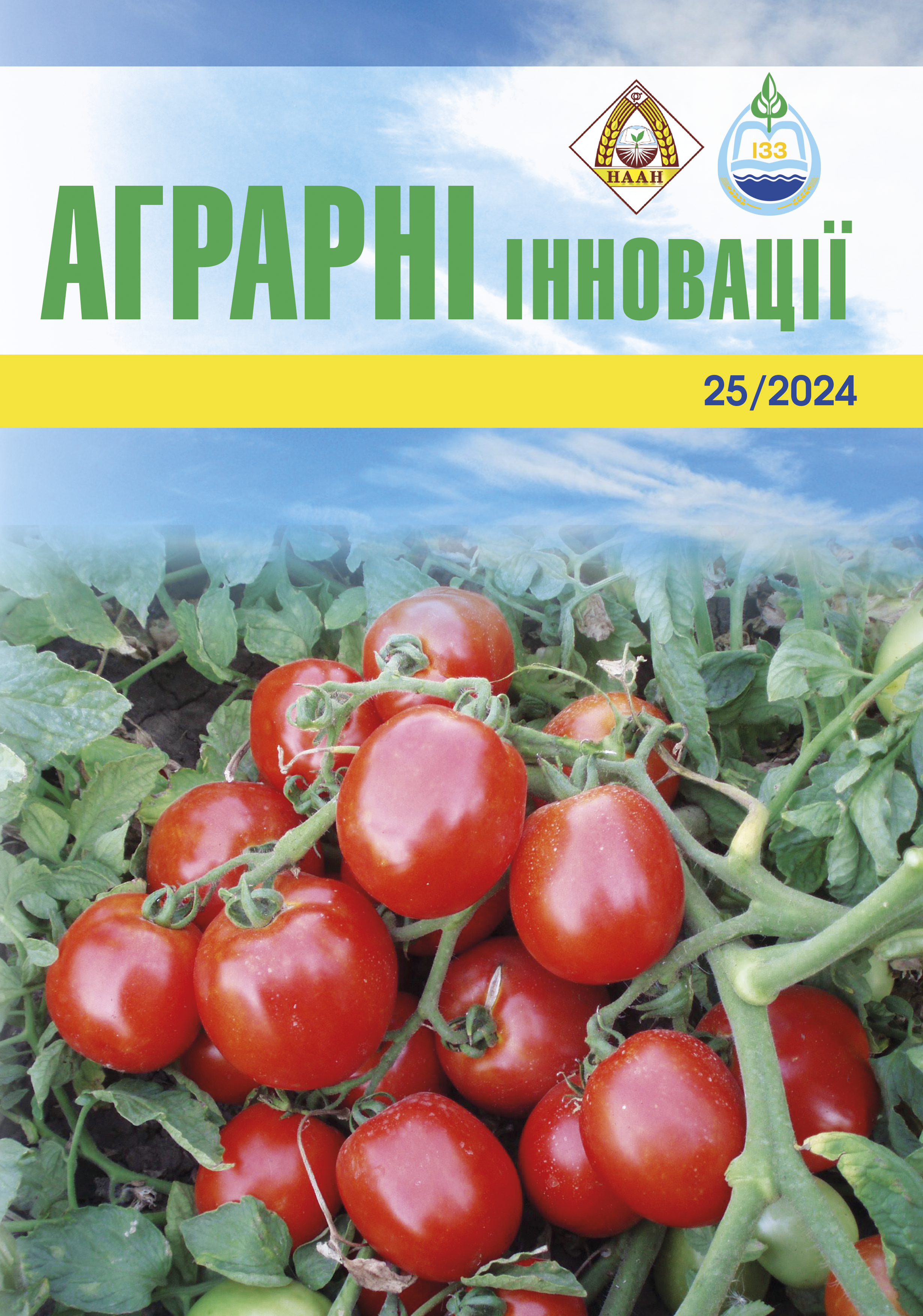Experience of using biological preparations for growing oil flax
Abstract
Scientific research on the problem of increasing the effectiveness of the functioning of the domestic flax industry plays an important role in the development of this industry. Purpose. To analyze the objective state, development trends and causes of changes characteristic of modern domestic oil flax production, as well as scientific interest in microbiological preparations of nutritional and protective action in the cultivation of organic products. Methods. The task was solved by collecting, summarizing and analyzing literature sources and achievements in research on the effectiveness of the use of microbiological preparations for plant nutrition and protection systems for obtaining organic products, followed by an assessment of their prospects. Research results. The analysis of literature sources shows the current state of oilseed flax production, substantiates the conditions of its development and export of seeds, analyzes the effectiveness of the use of biological products in the system of plant nutrition and protection in the production of organic oilseed flax. The positive effect of biological preparations on seed germination, reduction of diseases, increase of yield and oil yield was established. The obtained results indicate the possibility of using biological preparations to protect flax from fusarium instead of standard chemical preparations, which are more harmful to the environment. The prospects for further expansion of oil flax cultivation areas under organic farming are determined. Conclusions. The advantages of organic farming are indeed significant, primarily because they are aimed at eliminating the danger to humans and providing them with ecological food. It is proposed to conduct additional studies in the crop rotation of organic farming to determine the effectiveness of the use of microbiological preparations of nutritional and protective action in the cultivation of oil flax in the southern Steppe of Ukraine.
References
doi.org/10.32851/2226-0099.2022.123.9
2. Державна служба статистики України. URL: https://www.ukrstat.gov.ua/
3. Дзюбайло А. Г., Шувар А. М., Рудавська Н. М., Дорота Г. М., Тимків М. Ю. Оцінка сортів льону олійного за продуктивністю в зоні Лісостепу західного.
Передгірне та гірське землеробство і тваринництво. 2020. Вип. 68 (2). С. 53–66.
4. Ковальов В. Б., Ткачук П. В., Бучко Д. К. Особливості формування врожаю льону олійного на Поліссі.
Агропромислове виробництво Полісся. 2016. № 9.С. 7–15.
5. Дрозд І. Ф. Вплив метеорологічних умов Передкарпаття на морфологічні та біохімічні показники льону олійного. Науково-технічний бюле-
тень Інституту олійних культур НААН. 2020. № 29. С. 112–122. DOI: https://doi.org/10.36710/ioc-2020-29-11
6. Шмигаль Д. Стан посівів озимих в Україні цього сезону кращий за минулорічний – Мінагрополітики: інтерв’ю. Interfax Ukraine. 2022. URL: https://interfax.
com.ua/news/economic/880185.html
7. Панасюк І., Лебідь Л. Чому льон так і не зайняв лідерську позицію на українських полях. AgroPortal.ua.2021. URL: https://agroportal.ua/publishing/analitika/
pochemu-len-tak-i-ne-zanyal-liderskuyu-pozitsiyu-naukrainskikh-polyakh
8. Чехов І. В. Пропозиції щодо підвищення економічної ефективності виробництва олійних культур: наукове видання. Запоріжжя, 2018. 48 с.
9. Rymar E. Własciwości prozdrowotne lnu (Linum ussitatissimum L.). Herbalism. 2017. № 1 (3). Рр. 92–111.
10. Ільків Л. А Сучасний стан та ефективність виробництва льону. Молодий вчений. 2018. № 12 (64). С. 614–618. DOI: https://doi.
org/10.32839/2304-5809/2018-12-64-140
11. Коновалова В. М., Сябрук Т. А., Коновалов В. О., Тищенко А. В. Використання мікробіологічних препаратів при вирощуванні сільськогосподарських культур, зокрема льону олійного. Зрошуване землеробство. 2020. Вип. 73. С. 175–179. https://doi.org/10.32848/0135-2369.2020.73.34






